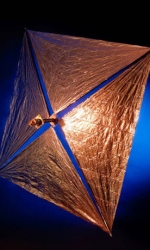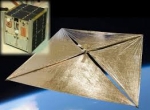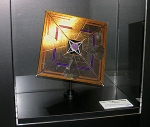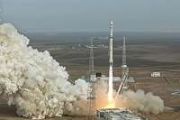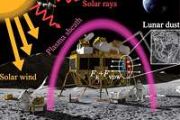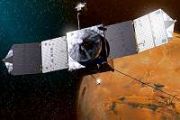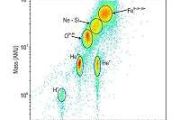Displaying items by tag: sail propulsion
CubeSail
CubeSail is an educational satellite project at the Surrey Space Centre (SSC).
Several PhD projects are centred on its development, and it will serve as a technology platform for at least two further educational satellites developed at SSC. The CubeSail mission objectives are ambitious, and will raise the Technology Readiness Level (TRL) of several technologies to flight demonstration level. A key feature is the deployment of a 25m2 sail structure, which will be used to demonstrate the propulsive effect of solar radiation pressure (i.e. solar sailing) and will demonstrate the de-orbiting capabilities of the sail as a drag augmentation device.
CubeSail will be the first launched three-axis stabilised solar sail, and makes use of a novel centre of mass/centre of pressure (CM/CP) offset technique to provide enhanced attitude control. In order to achieve the mission objectives, CubeSail will build on small satellite experience at SSC, such as the STRaND-1 nanosatellite, launched on February 25th 2013.
Furthermore, the mission critical sail deployment mechanism has undergone an extensive testing and validation process as part of the ESA Gossamer Deorbiter project carried out at SSC. The Cubesail project is also financially and technically supported by industrial partners, Astrium and Surrey Satellite Technology Ltd.
Gossamer Deorbiter Sail
Gossamer Deorbiter Sail: The purpose of this project is to develop a gossamer sail system that can be used for deorbiting satellites at end-of-life.
The principle that the system will use to achieve deorbiting is aerodynamic drag from the larger surface area. The system is intended mainly for low Earth orbit (LEO) telecom satellites but can potentially also be used in higher orbits, making use of solar radiation pressure to perform end-of-life manoeuvres.
A first demonstrator has been developed and tested by SSC in 2013 (see demonstrator page here).
Since there were many unfinished or failed attempts to prove that solar sailing is operational, ESA and DLR decided to start the collaborative Gossamer project. When all three steps of the Gossamer roadmap have successfully been completed, the solar sail propulsion will be declared operational and can be used in space mission. To ensure that Gossamer will not fail, ESA and DLR concentrate on a pure technological demonstrator mission with increasing complexity and level of difficulty in the three steps. Moreover, any scientific payload will be abandoned. It shall also be secured, that all Gossamer technologies are scalable. To avoid a failure in material or technologies, only those are used which have previously been proved and tested in numerous studies and projects. Finally, the Gossamer project and its technological success shall be perfectly documented and communicated to potential users.
The projected roadmap of DLR-ESA Gossamer contains three stages:
- Gossamer-1: launch in 2013: Demonstration of the safe deployment of a 5m x 5m solar sail in a 320km Earth orbit.
- Gossamer-2: launch in 2014: Deployment of a 20m x 20m solar sail in a 500km Earth orbit. Mass of 57 kg (inclusive margin) and container volume 50x50x60cm3 inside the rocking fairing. Test of a limited orbit and attitude control. The scheduled lifetime is about four weeks.
- Gossamer-3: launch in 2015: Deployment of a 50m x 50m solar sail in a > 10.000km Earth orbit. Mass of about 80kg and container volume 100x100x100cm3. Test of the full orbit and attitude control.
LunarSail
LunarSail is a cubesat-based space mission established by the Aerospace Research & Engineering Systems Institute, Inc. (ARES Institute).
LunarSail is designed to use a solar sail to propel a small spacecraft from Earth orbit onto a lunar orbit rendezvous trajectory and execute orbital insertion around the Moon. A primary objective of the LunarSail mission is to serve as a testbed for cubesat operations beyond low Earth orbit and applications requiring cislunar or interplanetary rendezvous. It is a proposed cubesat mission intended to demonstrate practical application of solar sail technology for propulsion, trajectory/attitude control and rendezvous with another body in space. With LunarSail, we will take advantage of the cubesat platform to conduct a first of its kind mission to use a solar sail to send a spacecraft to the Moon and then utilize the sail's unique characteristics to navigate into lunar orbit.
LunarSail will be the first solar sail to enter Lunar orbit. The first crowdsourced mission to cislunar space.
Sunjammer (spacecraft)
Sunjammer is a solar sail constructed by LGarde for NASA.
It is the largest solar sail to be constructed as of 2013. Sunjammer is slated to launch in November 2014 as the secondary payload of a SpaceX Falcon 9 rocket, along with the Earth observation satellite DSCOVR.
Sunjammer was named after a 1964 Arthur C. Clarke story of the same name, in which several solar sails compete in a race across the Solar System.
IKAROS
IKAROS (Interplanetary Kite-craft Accelerated by Radiation Of the Sun) is a Japan Aerospace Exploration Agency (JAXA) experimental spacecraft. The spacecraft was launched on 21 May, 2010, aboard an H-IIA rocket, together with the Akatsuki (Venus Climate Orbiter) probe and four other small spacecraft. IKAROS is the first spacecraft to successfully demonstrate solar-sail technology in interplanetary space.
On December 8, 2010, IKAROS passed by Venus at about 80,800 km distance, completing the planned mission successfully, and entered its extended operation phase.
The IKAROS probe is the world's first spacecraft to use solar sailing as the main propulsion. It plans to demonstrate four key technologies (comments in parentheses refer to figure):
- Deployment and control of a large, thin solar sail membrane (blue areas numbered 3)
- Thin-film solar cells integrated into the sail to power the payload (black rectangles numbered 4)
- Measurement of acceleration due to radiation pressure on the solar sail
- Attitude control via variable reflectance liquid crystal panels (orange rectangles numbered 2)
The mission also includes investigations of aspects of interplanetary space, such as the gamma-ray burst, solar wind and cosmic dust.
The probe's ALADDIN instrument (ALDN-S and ALDN-E) measured the variation in dust density while its Gamma-Ray Burst Polarimeter (GAP) measured the polarization of gamma-ray bursts during its six month cruise.
If successful, IKAROS is to be followed by a 50 m (160 ft) sail, intended to journey to Jupiter and theTrojan asteroids, later in the decade.

